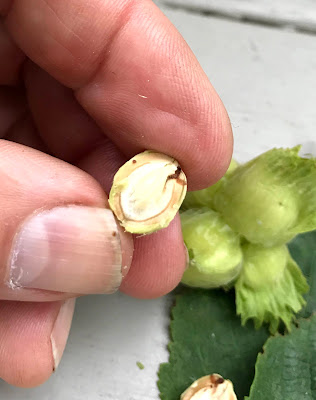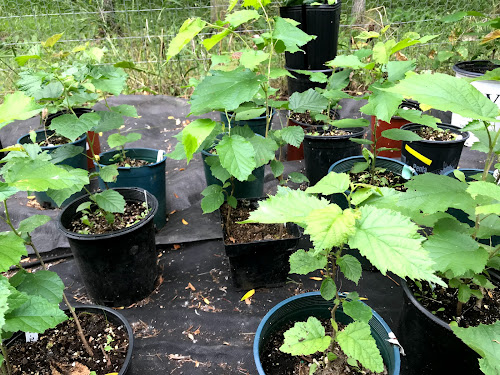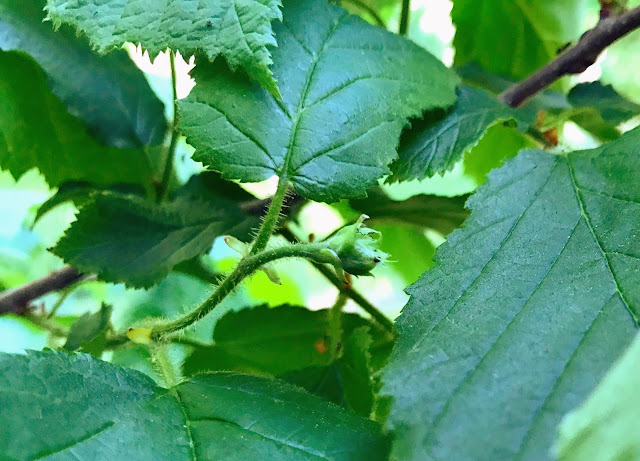Fall 2020
This year the fall colors on the hazelnuts were better than I've ever seen. With this unusually mild fall the orchard showed its best colors.
In this picture you can see that some hazelnut plants have turned a nice red color. Who needs maples when you can have a bright red hazelnut that also produce tasty nuts.
In the next pictures you can see every plant has a little different coloring
These hazelnuts are the some of the wild plants from southern North Dakota by Lisbon. This is one plant with many small stems and lots of suckers.
This plant with some nice color is a hybrid with few suckers and nice structure.
This is a 4 year old new hybrid with one trunk. It will be interesting to find out what type of nuts it will have next year. I'm hoping for large, thin shelled nuts.
This is another new hazelnut plant that had one major trunk, but was badly damage from rabbits last winter. All the branches above 2 feet where damaged and had to be pruned. This plant recovered with over 3 feet of new growth, but it produced 2 suckers which might have to be pruned off. It also lost all the mature stems that would have produced nuts for next year, so with a little pruning it will be producing nuts again in 2 years.

This is a 15 year old plant that has a nice structure with 5 stems and produces large nuts. The small stem to the right is a new stem that I'm cloning by layering. Next spring I'll remove it from the mother plant if it has a sufficient root system and pot it up. I'll leave it for another year if it has a limited root system. I have found that some types of hazelnuts take 2 years to produce sufficient roots before it can be remove from the mother plant.
This year we had a very poor crop of hazelnuts, but in late summer the plants have produced an over abundance of catkins, which is the male flower that will open in the spring and release pollen for next year's crop. I'm hoping this is an indication of a big crop for next year.
Problems in 2020
The beavers have been busy this year. This is not a hazelnut plant but a Boxelder tree and close to a row of hazelnuts.
Here is that row of hazelnuts with what is left of an oak tree in the bottom of the picture.
A few years ago a beaver did major damage to a row of hazelnuts and now any hazelnuts close to the river are fenced. So if you are planting along a river you must protect your nuts.
This year I thought there wasn't any deer damage but I was wrong.
These next pictures are more damage from a buck who thought he'd let me know he's back.
Fall colors in my back yard where also spectacular this year.
It sure as been an unusual fall.


















































